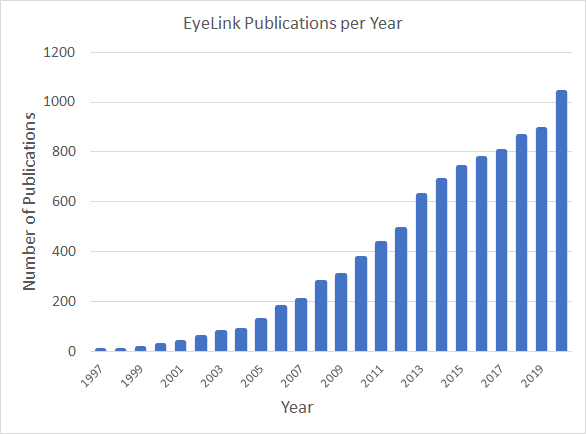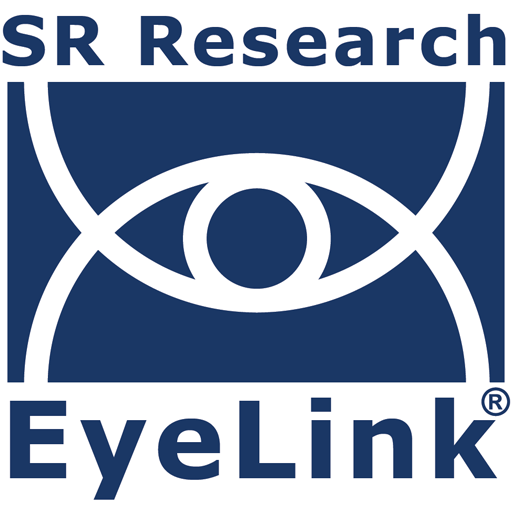
Estimated reading time: 3 minutes
Another year has passed (and what a year…), and we’ve updated our publication database again. 2020 may not have been a vintage year in many respects, but it produced over 1000 EyeLink eye-tracking papers, our biggest haul yet. Our publication database now contains well over 9000 peer-reviewed articles that used EyeLink eye trackers. As ever, the sheer range of topics covered is truly impressive – everything from face processing in dogs to the effect of Gustav Klimt’s painting style on eye movements! As in the 2018 and 2019 publication blogs, I’ve included an updated plot of publications by year below. Things are heading upwards nicely!

How We Do It
We thought it might be worth saying a few words about how we maintain our publication database. – We care very deeply about our user’s research and go to great lengths to ensure that the database is up to date and accurate.
We start with a Google Scholar search – using a keyword list that contains terms such as “EyeLink”, “SR Research” etc. The advantage of Google Scholar is that it searches within the body text of articles, not just the title and abstract. Most mentions of our hardware are buried in the methods sections. Even if we limit the search to the last year, a generic search for “EyeLink” related terms generates well over two thousand hits. Unfortunately, Google Scholar will only show the first 1000, so we limit the search further, by specifying individual journals. We start with a list of “known” journals that we take from our existing database (see this blog for a list of the most popular journals for EyeLink research). We also search the journal’s website itself, in case there are any papers that Google Scholar missed. For each journal, we download the full-text PDFs identified by our search. This process identifies the majority of EyeLink articles, but we also work through the first 1000 hits of the generic Google Scholar search, identifying any “new” journals, and then searching those journals systematically (including going back a few years in case there are any we missed).
We then check the methods section of each downloaded article to make sure that an EyeLink system was actually used to collect data – as opposed to simply being mentioned or referred to. This process ensures that we only consider full articles that have been published in peer-reviewed journals – all mentions of EyeLink systems in conference abstracts / proceedings etc are excluded. The PDFs are then imported into reference management software, where they are sorted and tagged.
Let Us Know
Despite our efforts, some publications may slip through, so if you know of any EyeLink publications that we’ve missed, then please do get in touch!
Contact
If you would like us to feature your EyeLink research, have ideas for posts, or have any questions about our hardware and software, please contact us. We are always happy to help. You can call us (+1-613-271-8686) or click the button below to email:
References & Image Credits
1. Header Photo by Alfons Morales on Unsplash. Published under the Unsplash License.

 How to Improve Second Language Learning
How to Improve Second Language Learning